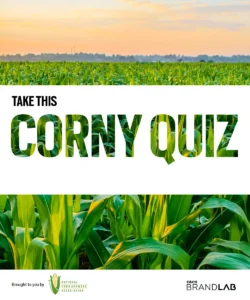From the oddly specific Buzzfeed quizzes of the early 2010s (e.g., “How Would You Die in Game of Thrones?”) to Tasty’s droolworthy recipe series, we’ve all engaged with sponsored content at some point. Sponsored content is any form of media—articles, videos, stories, podcasts, infographics, social posts, or other content—that resembles a publication’s editorial style and subject matter, but is paid for by an advertiser.

Although there’s been a huge rise in sponsored content lately, it’s actually been around for as long as formal advertising has been. The term “soap opera” comes from soap manufacturer P&G, who sponsored the long-running serial programs that began on the radio in 1930. The ongoing pervasiveness of social media has helped sponsored content grow; in fact, a 2019 analysis expected the global market to increase five times, or 372%, from 2020 to 2025.
No science marketing exists in a vacuum; it reflects what’s happening in the world. We’re living in a time marked by the ongoing effects of the COVID-19 pandemic, social justice movements, and rapid technological innovation—all of which play a part in these trends. Savvy science marketers should keep a pulse on current events to make sure they’re creating sensitive, appropriate media and leveraging the latest and greatest in technology. Read on to learn how to create the best sponsored content for your science marketing needs.
1. Empathetic Content
Over the last few years, conversations about mental health and social justice have become more prominent than ever, meaning audiences expect more authenticity and relatability from the brands they connect with. And this involves more than just acknowledging the “unprecedented times” we’re living in. Audiences expect the best sponsored content to include unedited imagery, relatable messaging, and evidence of real social responsibility that makes a difference in the world. For example, NBC and Mayo Clinic partnered on the Caregivers Resource Guide, which offers supportive resources for the almost 40 million Americans caring for a loved one.
2. Diversity and Representation
Diversity matters in advertising, as companies have the power to shape narratives through the content they create. When customers see themselves represented in advertising, it makes them much more likely to engage with a brand. In fact, 1 in 3 consumers say they would stop engaging due to a lack of diversity. But diversity shouldn’t just show up in the end product; marketers should consult a broad range of perspectives when creating sponsored content to ensure representation throughout the entire process.
3. Hyper-personalization
We live in an age that celebrates individuality, so one-size-fits-all approaches are likely to fall flat. Hyper-personalization leverages the latest advances in technology, like AI, which enables marketers to gather more real-time personal data than ever before on browsing activity and purchasing behavior, then use it to provide an experience that’s deeply unique to each individual. Think: ultra-personalized recommendations à la Netflix and Spotify.
4. Interactivity
Similarly, interactive content lets users interact with brands in real-time, which can reinforce brand perception and loyalty. Social media is a prime medium for interactivity, with polls, stories, videos, quizzes, filters, and user-generated content all available at a brand’s disposal. A benefit of sponsored content is that while consumers have grown increasingly weary of traditional advertising methods, they are twice as likely to engage with brands in interactive formats. The C&EN BrandLab specializes in creating effective and engaging content, like this “Corny Quiz: How Much Do You Know About Corn-Based Chemistry?”, a fun, interactive, and educational quiz sponsored by the National Corn Growers Association.
5. Video
Love it or hate it, the TikTokification of content shows no signs of stopping, with video continuing to reign supreme. Short videos make for easily digestible content that appeals to ever-decreasing attention spans. Most tech giant platforms, like YouTube and Instagram, have already adopted TikTok-style video formats that are primed for sponsored content, but long-form videos are also holding strong. Nature produces plenty of sponsored videos, like “p53: Guardian of the Genome,” an animated short that compares the tumor-suppressing protein to the work of a superhero.
6. Influencer Marketing
Influencer culture has grown from a type of marketing to a way of life, with the global influencer market doubling since 2019. With so much influencer saturation, micro- and nano-influencers (those with several thousand, instead of several million followers) are expected to have their moment. There will also be a continued emphasis on niche topics and a more natural, candid quality to posts. TecTraum tapped into pro soccer player Ali Krieger, who shared her experience with mild traumatic brain injury and their pro2cool device on her Instagram.
7. The Metaverse
Following Facebook’s dramatic rebrand to “Meta” late last year, the industry is abuzz with talk of the “metaverse”—the virtual world of the not-far-off future. The metaverse promises an immersive digital experience made possible through virtual reality (VR) and augmented reality (AR). The U.S. Space Force is already on-board, having launched its own non-fungible token (NFT), a digital art piece honoring Neil Armstrong.
Sponsored content, especially in the scientific community, blends editorial and promotional for a subtler approach that’s more likely to resonate with modern audiences. It also offers unique opportunities for collaboration, which makes it a fun space for creation. See how you can incorporate this approach in your marketing strategy to reap the benefits of sponsored content.


















